2022 Seasonal Amazon Advertising Report
A Roadmap for the Holidays, Prime Day, and Key Retail Dates
This report leverages Amazon advertising campaign data to provide the analysis and guidance needed for brands, agencies, and third-party sellers to optimize their strategies around key ecommerce holidays and sale events.
Key Insights:
- Calendar and retail “holidays” such as Black Friday and Prime Day drive brands to compete for shoppers by raising their advertising budgets – and with the right strategy, it pays off.
- While a major focus is given to the end-of-year holiday shopping season, an analysis of Jungle Scout’s Amazon advertising data reveals big opportunities for advertisers throughout the year.
- Well-prepared sellers and brands can earn higher returns on holiday ad spending by leveraging the data and actionable tips included in this report to identify trends, tap into the needs of last-minute shoppers, and more.
Amazon advertising Data Snapshot
Monthly percentage share of full-year Amazon advertising spending*
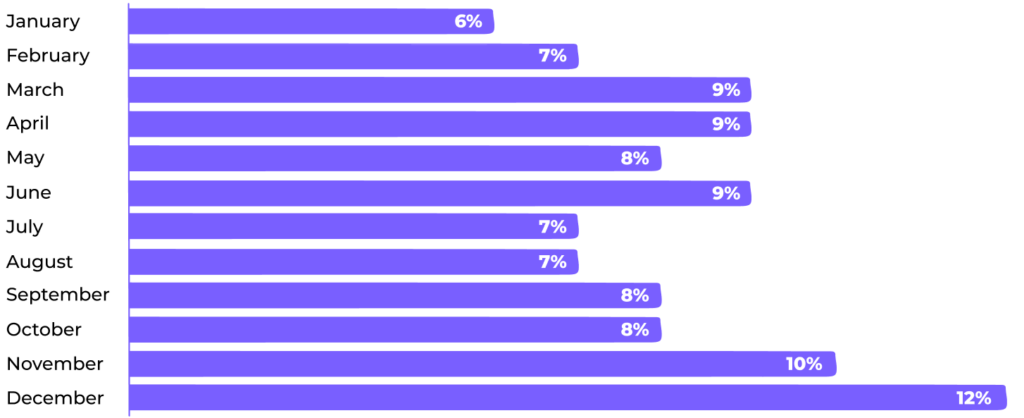
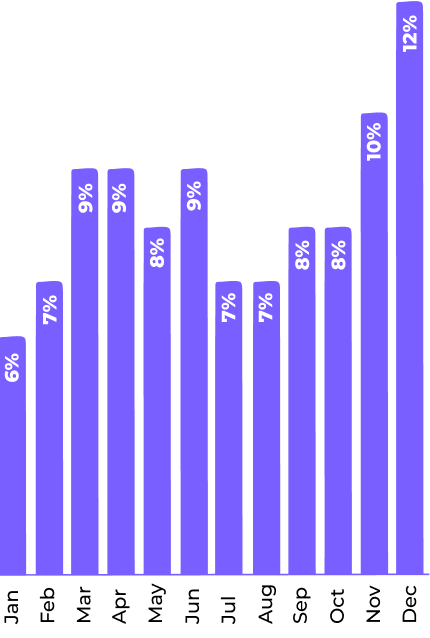
*Data shown represents each respective month’s share of full-year 2021 ad spend
Average return on Amazon advertising spend (RoAS)


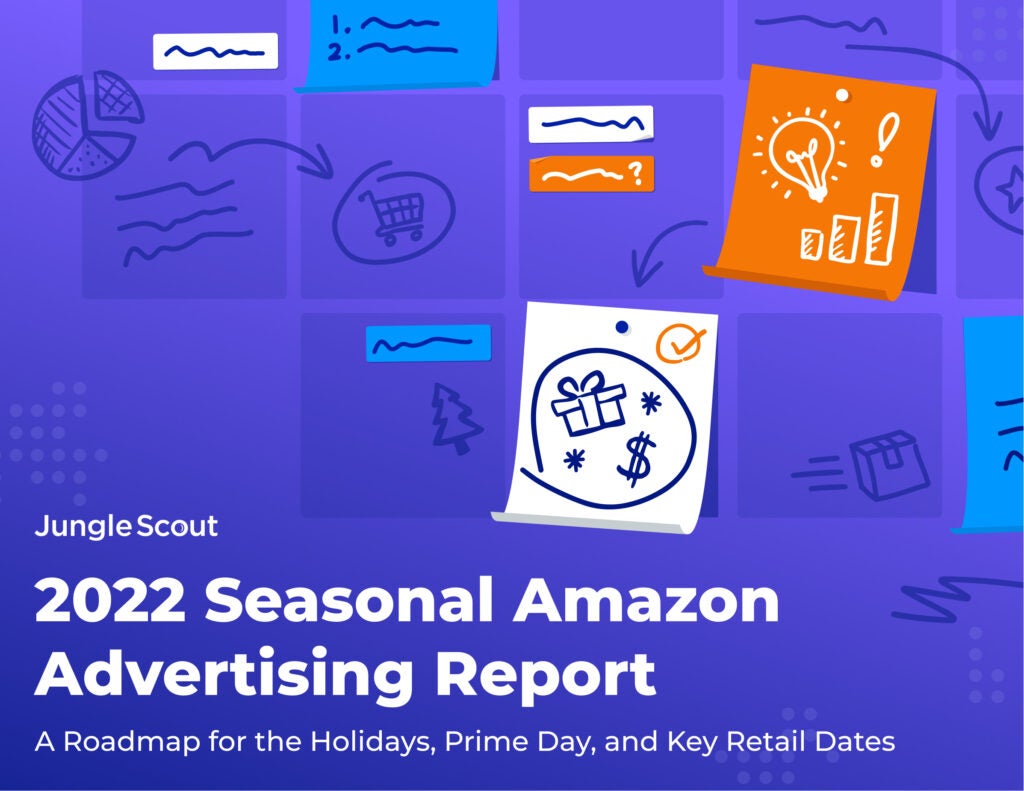
To view RoAS for other key holidays and each day of December, explore the full report.
About the report
Methodology
This reAnalysis and findings included in this report are based on ecommerce data for full-year 2021 from Downstream by Jungle Scout, the leading Amazon advertising and analytics software. The data set includes 5,000+ distinct brands and 950,000+ unique Amazon advertising campaigns across all key ad media, and primarily represent represents large ecommerce enterprises. It includes data and insights from Downstream, the leading Amazon advertising and analytics software.
About Jungle Scout
Jungle Scout is the leading all-in-one platform for ecommerce sellers, supporting more than $40 billion in annual Amazon revenue. Founded in 2015 as the first Amazon product research tool, Jungle Scout today features a full suite of best-in-class business management solutions and powerful market intelligence resources to help entrepreneurs and brands manage their ecommerce businesses. Jungle Scout is headquartered in Austin, Texas and supports 10 global Amazon marketplaces.
Using the Data
We encourage you to explore the report and to share, reference, and publish the findings with attribution to “Jungle Scout” and a link to this page.
For more information, specific data requests, or media assets, or to reach the report’s authors, please contact us at
[email protected]
About Downstream
Downstream by Jungle Scout is an enterprise-ready software solution that helps large brands and enterprises measure, manage, and optimize their ecommerce advertising campaigns.
Request a demo2022 Seasonal Amazon Advertising Report
A Roadmap for the Holidays, Prime Day, and Key Retail Dates
This report leverages Amazon advertising campaign data to provide the analysis and guidance needed for brands, agencies, and third-party sellers to optimize their strategies around key ecommerce holidays and sale events.
Access the report and readiness guide

Success! Explore the full report below.
Read more
Introduction & Key Takeaways
It’s difficult to overstate the importance of calendar holidays and seasonal retail shopping events for successful ecommerce brands, agencies and third-party sellers. According to recent consumer trends data from Jungle Scout, nearly 80% of consumers shop online for gifts and 67% turn to Amazon for holiday shopping. The corresponding increased flow of advertising dollars surrounding holidays and other shopping events, such as Prime Day or Black Friday, tends to create a high-risk and high-reward scenario for advertisers.
A new analysis of Amazon advertising campaign data shows the extent to which these events drive ad spend levels, and in some cases, ROI, as brands and sellers compete for advertising space and consumer attention. Coupled with Jungle Scout’s tips and best practices for making the most of holiday/event advertising on Amazon, this information can help guide implementation of a winning strategy for these crucial periods throughout the year.
Calendar and retail “holidays” such as Black Friday and Prime Day drive brands to compete for shoppers by raising their advertising budgets – and with the right strategy, it pays off.
While major focus is given to the end-of-year holiday shopping season, an analysis of Jungle Scout’s Amazon advertising data reveals big opportunities for advertisers throughout the year.
Well-prepared sellers and brands can earn higher returns on holiday ad spending by leveraging the data and actionable tips included in this report to identify trends, tap into the needs of last-minute shoppers, and more.
Monthly percentage share of full-year Amazon advertising spending*

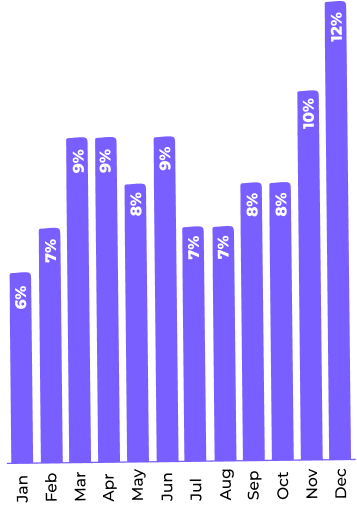
*Data shown represents each respective month’s share of full-year 2021 ad spend
Sale and Shopping days
As the popularity of online shopping continues to increase, so, too, has the importance of ecommerce-specific shopping and sale events such as Cyber Monday and Amazon Prime Day. On Black Friday, which traditionally marks the kickoff to the end-of-year holiday shopping season, an increasing number of purchases are made online each year. Of these 2021 shopping holidays, advertisers saw the highest return on advertising spend, or RoAS, on Prime Day, followed by Black Friday and Cyber Monday.
Advertising spend* and average RoAS for top ecommerce sale days
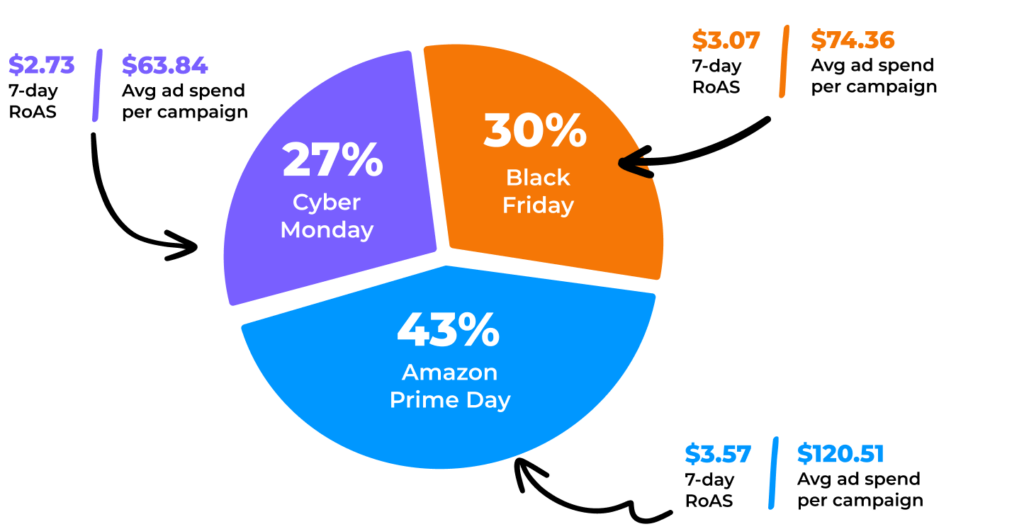
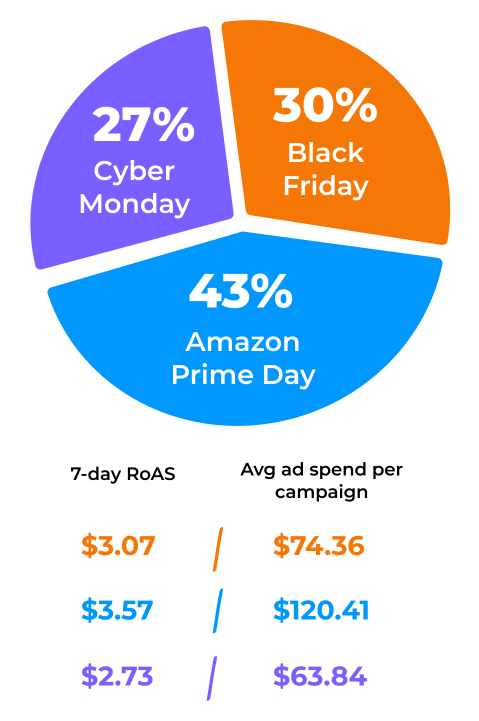
*Percentages represent advertising spending for the seven-day period leading up to each respective holiday as its portion of the total combined advertising spending across all three shopping days in 2021.

Insights → Advertising spending and RoAS were highest on Amazon Prime Day in 2021, both solidly surpassing Black Friday and Cyber Monday.
Amazon had its biggest-ever Black Friday to Cyber Monday holiday shopping weekend, with apparel, beauty, home, and toys among the top-selling categories. During the holiday season, third-party sellers—most of which are small and medium-sized businesses—achieved record worldwide sales in Amazon’s store. More than 130,000 third-party sellers worldwide surpassed $100,000 in sales on Amazon, and between Black Friday and Christmas, U.S.-based third-party sellers sold an average of 11,500 products per minute.
A teacher is merely a student with more to share.
Teacher at JS
Holidays
Advertising campaign data for a select number of 2021 calendar holidays shows the importance of advertising around key dates throughout the year. While Christmas and other end-of-year holidays are important, we note the significance in comparing ad spend and average RoAS throughout the year to identify less obvious opportunities.
Holiday advertising spend* and average RoAS
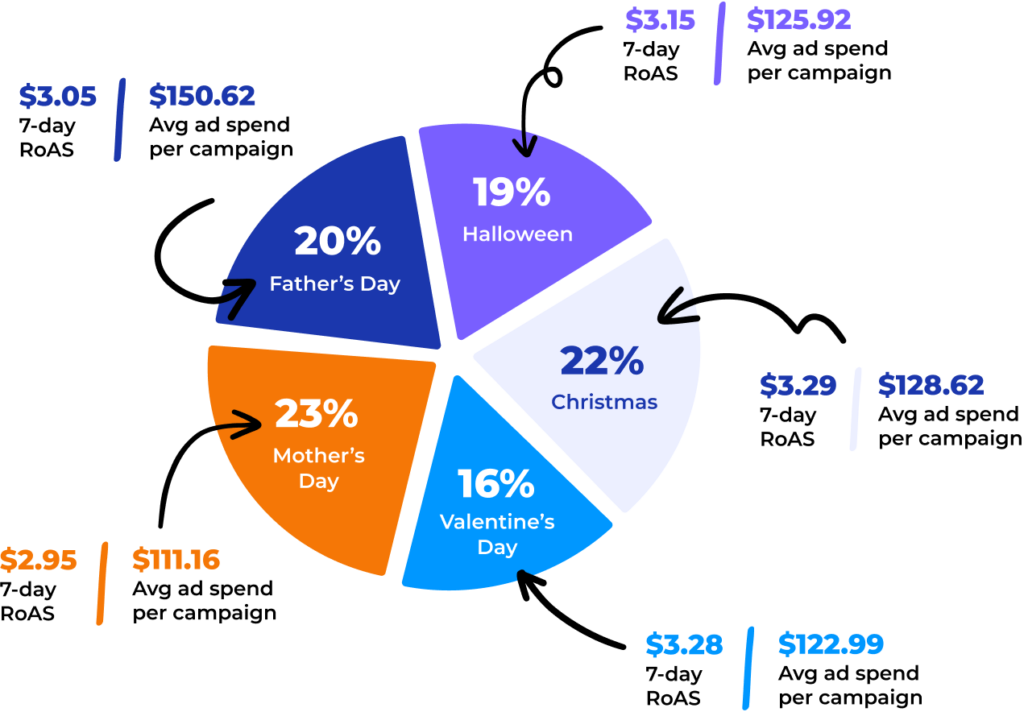
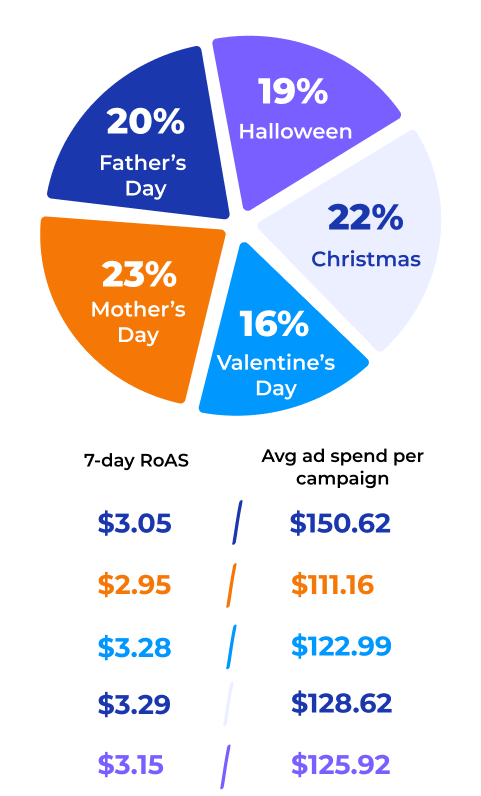
*Percentages represent advertising spending for the seven-day period leading up to each respective holiday as its portion of the total combined advertising spending across all five holidays in 2021.
Insights → Among these select holidays, Amazon sellers spent the most advertising dollars in the seven-day period leading up to Mother’s Day in 2021. And while average RoAS was highest in the weeklong period leading up to Christmas ($3.29), average RoAS for the same period ahead of Valentine’s Day – which held the smallest share of advertising spending – was just a penny lower ($3.28).
December Deep Dive
While the bulk of December advertising spending occurs earlier in the month, returns peak later, during the 7-day period leading up to Christmas Day. The single biggest advertising spending day in December 2021 was Dec. 12, but the highest returns on ad spend occurred Dec. 20.
Top shopping days
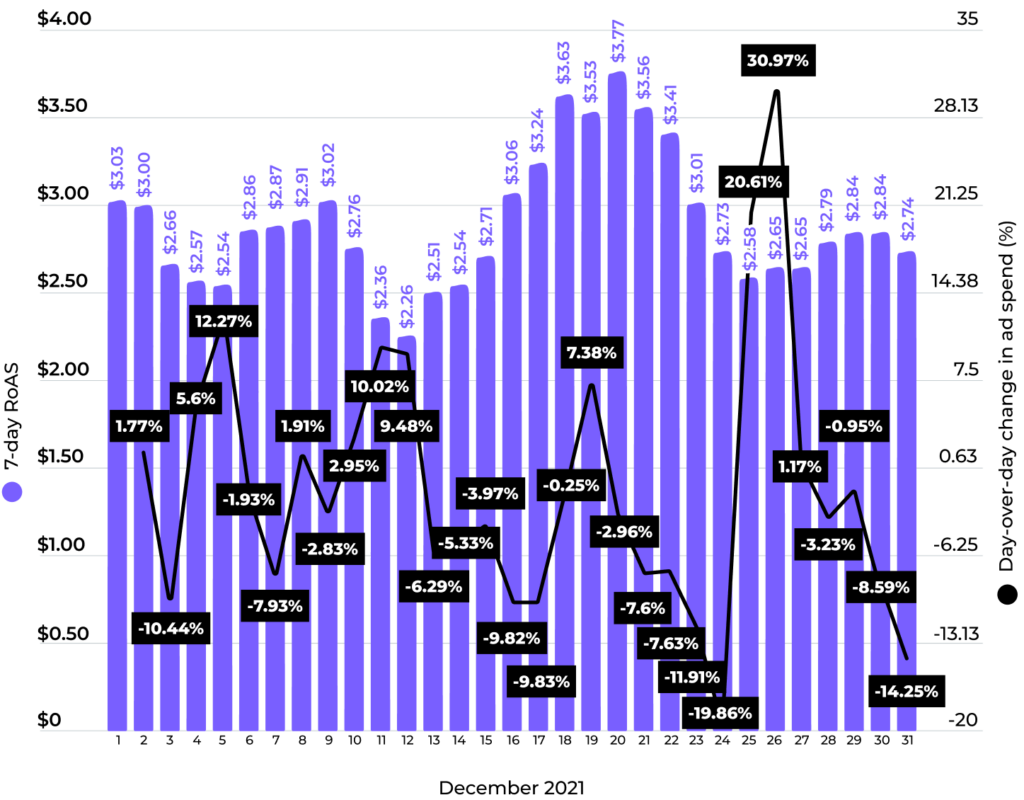
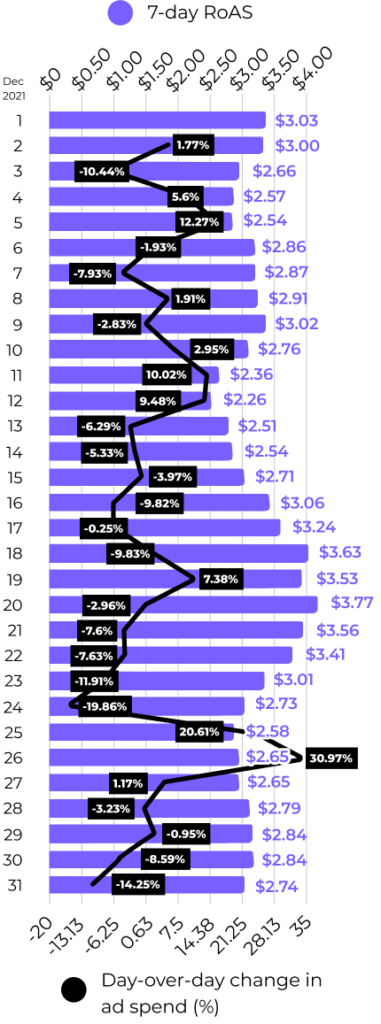
Key December Holidays
December 17: Super Saturday
December 18-26: Hanukkah
December 21: First day of winter
December 24: Christmas Eve
December 25: Christmas
December 26-Jan 1: Kwanzaa
December 26: Boxing Day (Canada)
December 31: New Year’s Eve
Holiday Readiness Guide
Your brand’s key to holiday success: Prepare early with proven strategies
Holidays can be both high-risk and high-reward for ecommerce brands. The data shows that competition for advertising space and consumer attention drives promotional budgets up during key seasonal shopping times. Delayed planning can lead to wasted advertising budgets, unmet sales goals, operational headaches, and lost opportunities to win big at key moments (like the last-minute shopping rush just before Christmas). The savviest brands — and those set to reap the most significant rewards — plan early so they can spend the season focusing on optimizing strategies and driving sales rather than making up for lost time.
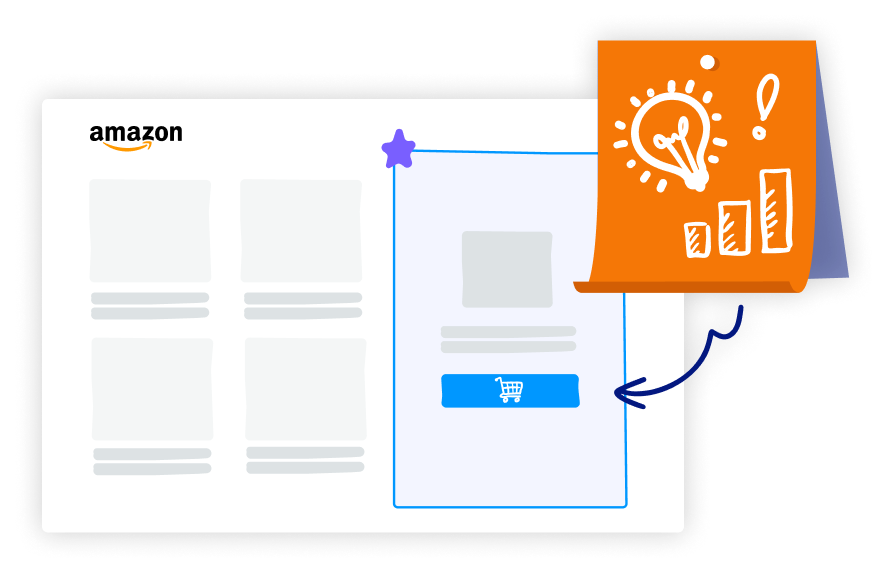
Six tips for holiday planning and promotion
By leveraging critical data to prepare early and more accurately, brands, agencies, and sellers can drive more conversions, connect with new customers, and earn higher returns on advertising spend during seasonal shopping days and holidays.
1. Start inventory planning and preparation early
Increasing inventory levels for the holiday season is a given, but don’t sleep on seasonal shopping days if your brand sells relevant products. Ensuring you have enough inventory during high-visibility, high-competition shopping times could make the difference between a consumer choosing your brand over a competitor that goes out of stock.
At the same time, you want to avoid having too much leftover stock cutting into your inventory limits post-holiday — especially for end-of-year holidays, after which Amazon returns skyrocket. Review past years’ sales numbers to estimate how much inventory you need to strike the right balance with your seasonal and holiday inventory. If you have new products you did not sell last holiday season, refer to the sales history for a similar product from a competitor to gauge expected consumer interest. If the amount of inventory you need exceeds your Amazon limits, consider outsourcing to a third-party warehousing partner to ensure you don’t go out of stock during the busiest shopping days of the year.
2. Allocate holiday-specific advertising budgets
Ad spend on Amazon can as much as double during seasonal shopping times, so holiday-specific research for paid advertising campaigns is crucial for anticipating a realistic budget that will effectively drive conversions amid heightened competition. With more advertisers and higher spending across the platform, your brand should expect different RoAS and advertising cost of sale (ACoS) targets than during non-peak times.
Once you know your seasonal RoAS and ACoS targets, you can enlist the help of an automation tool like Downstream by Jungle Scout to actively update bids to help you reach those targets with the best possible ROI. As your seasonal campaigns run, you can activate tools like Dayparting to push extra holiday promotional spending to the highest-converting times of the day or week.
3. Perform holiday-related keyword research
Brands should adjust keyword strategies for holiday-focused campaigns to compete for the attention of seasonal shoppers. Look at historical search volume for seasonal and holiday-related keywords to find opportunities to win placements by integrating lower competition targets (such as broad match and long-tail keywords like “Hanukkah gifts for dad,” “gifts for mom,” or “tech gifts for men”) into your campaigns. Once you have identified multiple seasonal keywords to target, use cascading bids to set different bid amounts based on keyword match type to determine the most effective bidding ratio for your campaigns.
You should also inject your brand’s organic presence with holiday-related terms by adding them to the front end copy and back-end keywords on your product listings. If your brand is enrolled in Brand Registry, you can use Amazon’s Brand Analytics tool to see which keywords your products (or a competitor’s products) ranked for during specific times the previous year and use the most high-performing keywords in this year’s listing optimizations and sponsored campaigns.
4. Create memorable experiences for new customers
As many as 4 out of 5 consumers opt to shop online for gifts and 67% turn to Amazon for holiday shopping. With an influx of consumers searching for products, seasonal shopping days are a significant opportunity for brands to connect with new customers. Optimize your product listings, A+ content, and Amazon Storefront to ensure that consumers who discover your brand during holiday shopping have a memorable and seamless shopping experience.
While many consumers will start their product search directly on Amazon, others will find their way to the platform through outside channels like social media. Consider leveraging DSP advertising, working with Amazon Influencers, and promoting products on Amazon Live to lead off-platform shoppers to your listings and provide them with a social-media-like experience once they arrive.
5. Perform holiday-related keyword research
Planning can help your brand beat the competition, but so can staying agile to continue driving sales after competitors have run out of stock, pulled back on promotions, or exhausted advertising budgets. Jungle Scout data shows that last-minute shoppers tend to spend less and buy fewer items, so late-in-season discounts could help draw them to your products. They are also typically less brand-driven, which means with the right price, product description, or ad placement you may be able to attract new customers more easily at the end of a holiday shopping period than at the beginning.
As a holiday or seasonal shopping day draws closer, perform additional keyword research to see how last-minute shoppers’ product searches differ from those earlier in the season. Last-minute shoppers are less likely to be focused on things like holiday grocery items, decor, or party supplies, so pull back your promotional strategies for those categories and focus instead on gift items. During longer seasonal promotional periods, like end-of-year holidays, monitor the performance of your advertising campaigns closely to identify the products driving the highest conversions. As the season progresses, you can funnel advertising spend to your best-performing products to stay competitive and optimize RoAS.
6. Don’t neglect post-holiday planning
Your brand’s seasonal planning should extend beyond the holiday or shopping day itself. Product returns typically reach an annual peak from December through January, and the number of return packages being processed during this time continues to surpass previous records each year. As you begin pre-holiday planning for major seasonal shopping days, anticipate any additional customer service support you may need to process Amazon product returns post-holiday as well.
An increase in product returns and leftover seasonal stock can quickly begin cutting into your inventory limits post-holiday. Plan for end-of-season sales and accompanying advertising spend to help clear out inventory, especially after the December shopping season when you need to restock for the new year.
About the report
Methodology
Analysis and findings included in this report are based on ecommerce data for full-year 2021 from Downstream by Jungle Scout, the leading Amazon advertising and analytics software. The data set includes 5,000+ distinct brands and 950,000+ unique Amazon advertising campaigns across all key ad media, and primarily represents large ecommerce enterprises.
About Jungle Scout
Jungle Scout is the leading all-in-one platform for ecommerce sellers, supporting more than $40 billion in annual Amazon revenue. Founded in 2015 as the first Amazon product research tool, Jungle Scout today features a full suite of best-in-class business management solutions and powerful market intelligence resources to help entrepreneurs and brands manage their ecommerce businesses. Jungle Scout is headquartered in Austin, Texas and supports 10 global Amazon marketplaces.
Using the Data
We encourage you to explore the report and to share, reference, and publish the findings with attribution to “Jungle Scout” and a link to this page.
For more information, specific data requests, or media assets, or to reach the report’s authors, please contact us at
[email protected].
About Downstream
Downstream by Jungle Scout is an enterprise-ready software solution that helps large brands and enterprises measure, manage, and optimize their ecommerce advertising campaigns.
Request a demo